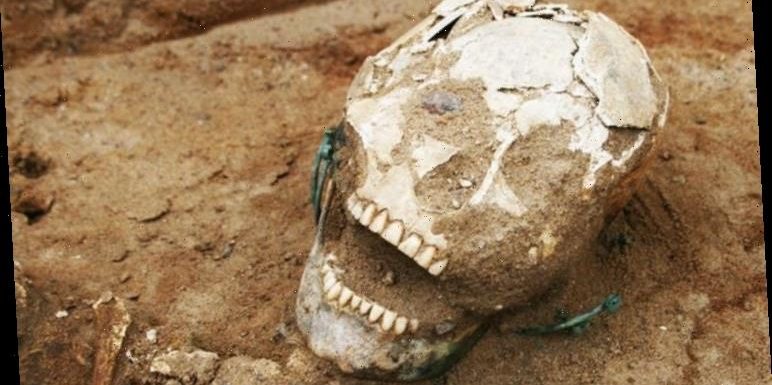1,000-year-old Christian cemetery yields terrifying discoveries
It is suspected that the nearly 1,000-year-old find is the oldest known Christian burial site in north Poland’s Dobrzyn Region. In the year 966 Poland formally accepted Christianity, switching from paganism to Catholicism.
In the village of Starorypin Prywatny, archaeologists have now discovered possible proof of Christianity, unearthing the corpses of women and children in 30 graves.
Lead archaeologist Dr Jadwiga Lewandowska of the Dobrzyn Land Museum in Rypin said: “Until now, based on uncovered artefacts, we thought the necropolis dated back to the 12th century.
“Thanks to the physicochemical analysis of bones discovered last year, we know that it already existed in the middle of the 11th century.”
The burial site yielded a number of gruesome discoveries, including the body of a woman with a boulder on her chest. Another woman was buried on her side in the foetal position. It is likely the woman was tied up when she was buried.

And the majority of the bodies uncovered at the site were of children. These were children aged two-and-a-half to four-years-old. One of the burials also appears to have been a premature birth.
Professor Krzysztof Szostka of the Cardinal Stefan Wyszynski University in Warsaw said: “What is interesting, it was in this grave that we found probably the most beautiful necklace we have so far been able to find at the cemetery.”
The oldest corpses were of men aged 40 to 45-years-old. And the women were all likely aged 25 to 30-years-old. The corpses all featured grounded down teeth, which is a sign of a diet heavy in poorly refined flour.
Alongside the corpses, the archaeologists discovered a number of small metallic crosses – evidence of the denizens’ Christian faith.
Dr Lewandowska said: “The wealth of the deceased’s items surprised us.”
From the 13th century and onwards, Christians were buried without personal effects.
And the cemetery is likely to yield many more discoveries in the years to come as only a small fraction of it has been explored so far. The 30 graves are part of a necropolis believed to cover nearly five acres of land.
So far, the archaeologists have only explored a few hundred square metres of it. The cemetery was discovered in a cornfield and, unfortunately, many of its graves have been destroyed by the ploughing of the land.
None of the bodies unearthed at the site has been linked to other religious practices outside of Christianity. The archaeologists believe this is good sign Christianity reached this part of Poland earlier than the mid-11th century.





